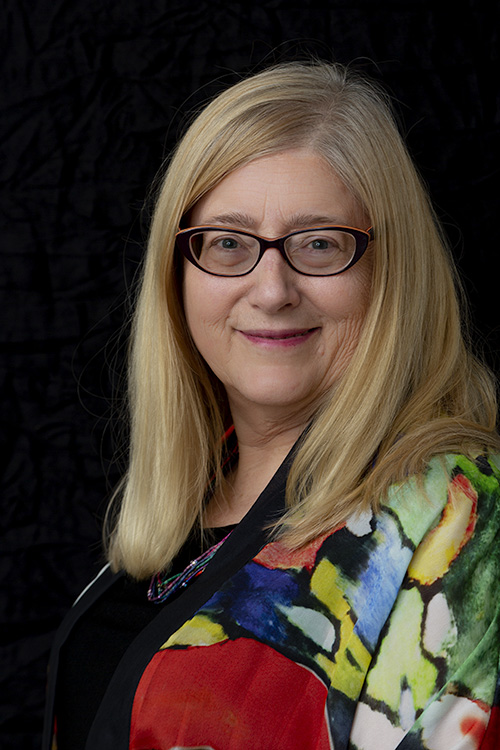The Power of Stories
On tasting her first radish, the gorilla Koko signed to her human companions, “Red hurt food.”
Just three words: one for the beginning, one for the middle, one for the end. That is all a story requires. Koko’s story, one of many possible stories about a radish, was complete in itself: compelling, grounded in the immediate, with character, action, resolution. The power of three is embedded in every story, and every story has power.
As the poet Muriel Rukeyser famously wrote, “The Universe is made of stories, not of atoms.”
For human beings, what Rukeyser said is not just metaphor. Stories create a model world inside the mind of the reader, and each of us makes decisions based on the model we carry. Some stories, the ones that align with the real world and human values, are light to carry. But the stories that require us to lie to ourselves and to hate one another can be heavy burdens.
Governments understand that stories change us and change our behavior. Our foremothers who worked in factories during World War II were inspired by stories of Rosie the Riveter, co-created by the federal government and Hollywood. When the war was over, that same partnership of government and Hollywood wanted to put the genie back in the bottle. Images of the courageous woman worker suddenly disappeared, replaced by tales of the Happy Homemaker. Many of us remember the 1950s when Ozzie and Harriett and Father Knows Best elevated the housewife to near-sainthood.
As with other powerful forces, the power of stories can be used for good or for ill. Just as with fire, the power of stories can be used both to destroy and to create. Some Americans carry stories of reconciliation, of using science to address our challenges, of equal rights for all; others of us carry stories that a killer pandemic is not dangerous but a free election is a danger. Some stories are light on our shoulders while others are a heavy burden indeed.
On January 20, 2021, two very different narratives collide in Washington, D.C. Opposing sets of three word stories: Climate change real versus climate change false. Election results accurate versus election results fraudulent. One set of stories is fueled by what Rebecca Solnit calls “a passion for inequality.” In those stories, only a subset of Americans has the right to decide the future of the country and violence is an acceptable way to suppress the rights of others. That narrative is a heavy burden, requiring belief in such nonsense as breaking and entering the United States Capitol to reverse a presidential election. The bully pulpit for that story expires at 11:59AM today.
The story that ascends to the bully pulpit of the presidency at noon calls for equality in the right to vote. The ascending story calls for the rights of women and people of color to be respected, calls for scientific approaches to ending the pandemic. This new story is lighter to carry, more in line with the universe we live in, more affirming of our humanity. Rebecca Solnit wrote, “Every problem is in part a storytelling problem. We just barely survived the result of some very stupid stories.” And these stories are not just stupid; they are toxic lies. In her article “When Toxic Storytelling Breaks Reality,” storyteller Donna Washington wrote that the impetus to believe toxic stories comes from rejecting an unpleasant reality. For example, an abused wife tells herself her abuser loves her, and that she can stop the abuse by being extra good.
“You tell yourself whatever stories you need to tell yourself so that you don’t have to face an uncomfortable or difficult reality. Once you internalize a toxic story, every incident must fit into that toxic soup in some kind of way for you to be okay. The longer you live in that skewed story, the harder it is to face that you might be wrong, or out of touch, or even the instrument of your own destruction.”
Step by step, the believer in a toxic story moves further from the truth and further into danger. And when believers in toxic stories come together in numbers, the danger is amplified: Let’s all take off our masks because a hoax can’t hurt us. Let’s mob the Capitol because the election was stolen.
The use of story to lie, to oppress, is the polar opposite of what many of us try to do with our stories. Real storytellers call for the Art of the Possible: Holding up the opposite of stereotypes and prejudices and asking, “What if?” We use the metaphor of story to convey what is real, and to remind one another of our higher values.
Step by step, a believer in these stories breaks down already held toxic stories and moves closer to the truth.
It could be the truth that women past midlife are vibrant human beings, as proclaimed in the Elderotica stories many of us write. After all, sex has been used to sell everything from cars to laundry soap; why not equality for older women?
It could be the truth that people of color belong in the seats of power, as Shonda Rhimes proclaims in her deliciously sexy stories. In Scandal, an African American woman is a powerful force in the White House. In her new show Bridgerton, Britons of African ancestry are part of a very sexy English aristocracy. Why not use sex to proclaim equality for people of color?
It could be the truths in so many stories by oppressed people, opening windows to lives the rest of us need to understand.
The enormous power of story should be harnessed for empathy not hate, for breaking stereotypes not reinforcing them. Story of necessity simplifies reality; that is part of its power. No woman is only Rosie the Riveter; no woman is only June Cleaver. But stories that lead us away from the truth must be countered by stories based in human values.
Which brings us back to the oppressive stories that have been amplified over the last four years. The first response to the invasion of the United States Capitol will rightly be to hold criminals accountable. But after that must come a different response. That response must surely include education, so that a population confronted with a deadly infectious disease actually understands the risks and how to manage them.
For too long, spurred on by the misguided tenets of No Child Left Behind, public education in the United States has focused on facts at the expense of critical thinking. Education can only prepare children for the future when it enables us to think for ourselves. An education focused on facts has left an entire generation vulnerable to the demagogue. When the demagogue announces that climate change is not real, that election results are false, too many Americans are unable to pierce the lies. And when “news” organizations can proclaim those lies because of the demise of the Fairness Doctrine, credulous people are more easily misled. I would love it if everyone who participated in the failed Washington coup were sentenced to read an actual newspaper every day for the rest of their lives. As unlikely unlikely as that is to happen, it is a nice story I tell myself.
Our reaction to the misinformation campaign of the last four years must also include stories, because metaphor can be even more powerful than bald statements of fact. As Rebecca Solnit writes, “The long-term response has to include better stories at the substrata of our imaginations and our lives, personal and political. We have them, but amplifying them, celebrating them, circulating them, arguing their logic in our conversations and speeches and teaching is part of the work all of us can do.” The incoming administration will have many stories to tell. But they will not be alone; all of us will have a role to play, creating stories that proclaim the magic of reality and the power of stories.
It is a significant responsibility to be a teller of tales. We have seen in the propaganda campaigns of recent years that the pen really can be mightier than the sword; witness how little the Russians spent to sow chaos in America. On the positive side, groups like the Geena Davis Institute encourage the media to present marginalized groups in positive ways, giving a powerful boost to equality.
But our responsibility does not compel us to be anxious about what we write or second guess ourselves with every word. Far from it. Oscar Wilde said “Life is too important to be taken seriously,” and so is our writing. Great stories are fun as well as informative. Like the power of the number three, joy, and the enjoyment of a tale well told, is part of the power of story.



2 Responses
Brilliant!
Thanks Mirinda!